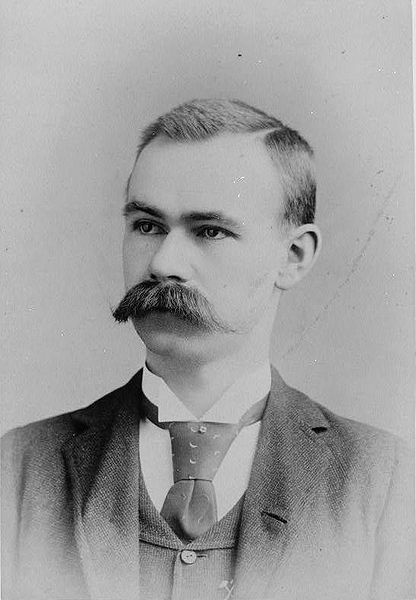<Back to Index>
- Statistician Herman Hollerith, 1860
- Composer Gioachino Antonio Rossini, 1792
- 5th Prime Minister of India Morarji Ranchhodji Desai, 1896
PAGE SPONSOR


Herman Hollerith (February 29, 1860 – November 17, 1929) was an American statistician who developed a mechanical tabulator based on punched cards to rapidly tabulate statistics from millions of pieces of data. He was the founder of the company that became IBM.
Hollerith was born in Buffalo, New York, where he spent his early childhood. He entered the City College of New York in 1875 and graduated from the Columbia University School of Mines with an "Engineer of Mines" degree in 1879. In 1880 he listed himself as a mining engineer while living in Manhattan, and completed his Ph.D. in 1890 at Columbia University. He eventually moved to Washington, D.C., living in Georgetown, with a home on 29th Street and ultimately a factory for manufacturing his tabulating machines at 31st Street and the C&O Canal, where today there is a commemorative plaque placed by IBM.
At the urging of John Shaw Billings, Hollerith developed a mechanism using electrical connections to trigger a counter, recording information. A key idea was that data could be coded numerically. Hollerith saw that if numbers could be punched in specified locations on a card, in the now familiar rows and columns, then the cards could be counted or sorted mechanically and the data recorded. A description of this system, An Electric Tabulating System (1889), was submitted by Hollerith to Columbia University as his doctoral thesis, and is reprinted in Randell's book. On January 8, 1889, Hollerith was issued U.S. Patent 395,782, claim 2 of which reads:
The herein-described method of compiling statistics, which consists in recording separate statistical items pertaining to the individual by holes or combinations of holes punched in sheets of electrically non-conducting material, and bearing a specific relation to each other and to a standard, and then counting or tallying such statistical items separately or in combination by means of mechanical counters operated by electro-magnets the circuits through which are controlled by the perforated sheets, substantially as and for the purpose set forth.
Hollerith had left teaching and begun working for the United States Census Office in the year he filed his first patent application. Titled "Art of Compiling Statistics", it was filed on September 23, 1884; U.S. Patent No. 395782 was granted on January 8, 1889.
Hollerith built machines under contract for the Census Office, which used them to tabulate the 1890 census in only one year. The 1880 census had taken eight years. Hollerith then started his own business in 1896, founding the Tabulating Machine Company. Most of the major census bureaus around the world leased his equipment and purchased his cards, as did major insurance companies. To make his system work, he invented the first automatic card feed mechanism and the first key punch (that is, a punch operated by a keyboard); a skilled operator could punch 200 – 300 cards per hour. He also invented a tabulator. The 1890 Tabulator was hardwired to operate only on 1890 Census cards. A control panel in his 1906 Type I Tabulator allowed it to do different jobs without being rebuilt (the first step towards programming). These inventions were the foundation of the modern information processing industry.
In 1911 four corporations, including Hollerith's firm, merged to form the Computing Tabulating Recording Corporation (CTR). Under the presidency of Thomas J. Watson, it was renamed International Business Machines Corporation (IBM) in 1924.